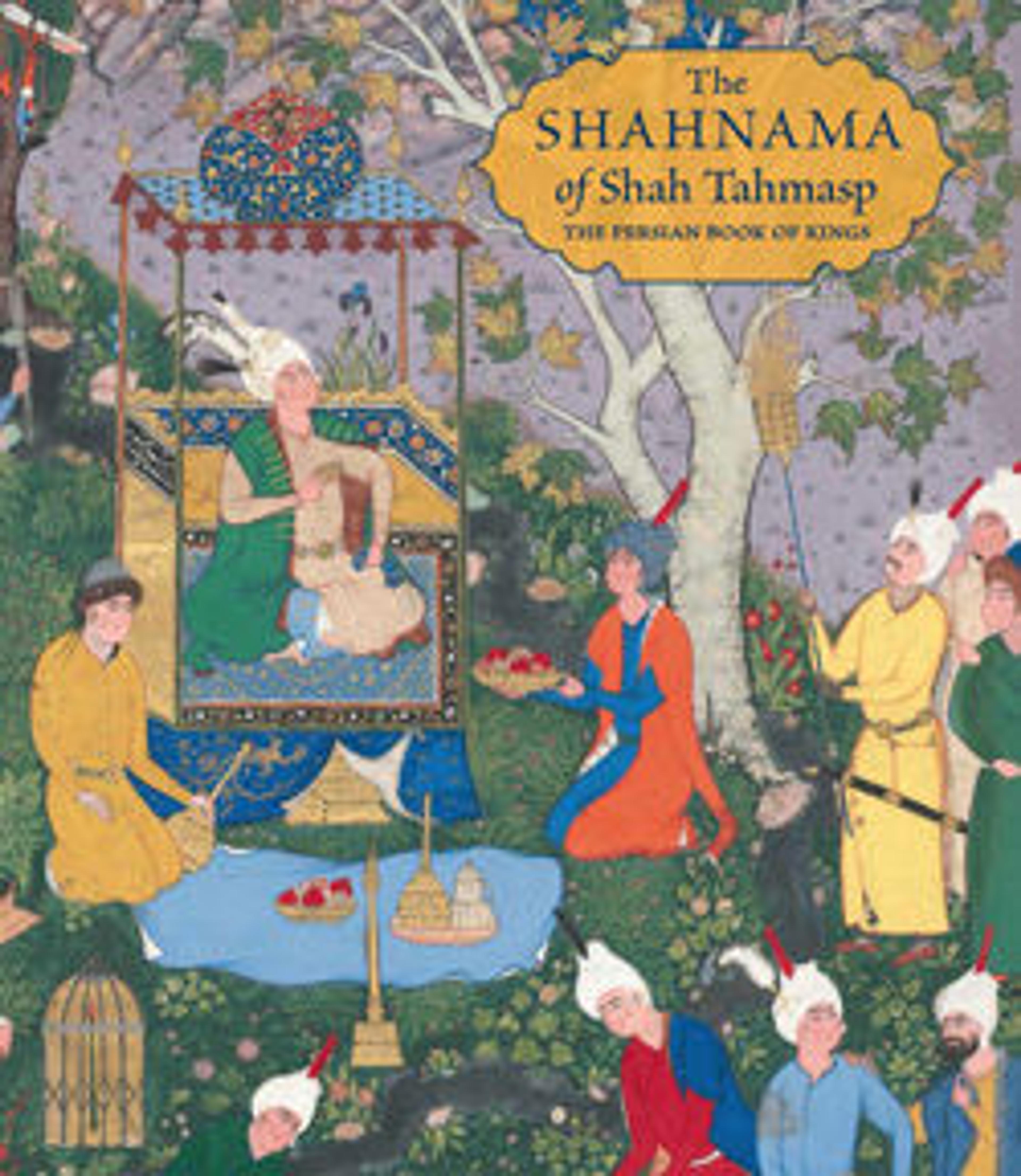"The Night Battle of Kai Khusrau and Afrasiyab", Folio367v from the Shahnama (Book of Kings) of Shah Tahmasp
At nightfall, after a day-long battle against Afrasiyab and his army, Kai Khusrau warned his Iranian troops that Afrasiyab would certainly try a surprise night attack. The Iranians dug a ditch across the Turanian route, doused their lights, and maintained silence. Meanwhile, Afrasiyab ordered the attack on the Iranians. When the Turanian army neared the Iranian camp, they let out war cries and charged, but many fell in the trench, and the rest fled. Then Rustam went forward from one side, Giv, Tus, and Gudarz from the other, and massacred the Turanian army. Afrasiyab abandoned his troops and fled. This was his last battle against the Iranians. Bashdan Qara, who illustrated this scene, was one of the journeyman artists of the Shahnama, tasked most often with painting battle scenes.
Artwork Details
- Title:"The Night Battle of Kai Khusrau and Afrasiyab", Folio367v from the Shahnama (Book of Kings) of Shah Tahmasp
- Author:Abu'l Qasim Firdausi (Iranian, Paj ca. 940/41–1020 Tus)
- Artist:Painting attributed to Bashdan Qara (Iranian, active ca. 1525–1535)
- Date:ca. 1525–30
- Geography:Made in Iran, Tabriz
- Medium:Opaque watercolor, ink, silver, and gold on paper
- Dimensions:Painting:
H. 12 1/8 in. (30.8 cm)
W. 7 1/4 in. (18.4 cm)
Entire Page:
H. 18 9/16 in. (47.1 cm)
W. 12 9/16 in. (31.9 cm) - Classification:Codices
- Credit Line:Gift of Arthur A. Houghton Jr., 1970
- Object Number:1970.301.48
- Curatorial Department: Islamic Art
More Artwork
Research Resources
The Met provides unparalleled resources for research and welcomes an international community of students and scholars. The Met's Open Access API is where creators and researchers can connect to the The Met collection. Open Access data and public domain images are available for unrestricted commercial and noncommercial use without permission or fee.
To request images under copyright and other restrictions, please use this Image Request form.
Feedback
We continue to research and examine historical and cultural context for objects in The Met collection. If you have comments or questions about this object record, please contact us using the form below. The Museum looks forward to receiving your comments.
